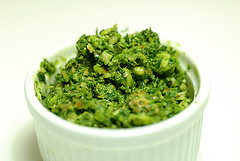Nutrition & Bone Health: How to build & maintain healthy bones on a plant-based diet
 Friday, November 6, 2009
Friday, November 6, 2009 If you haven't already read (or at least skimmed the abstracts) listed in the the previous post, you may want to do so to get the full story -- i.e., bones are made of more than calcium and vitamin D.
Vegan Guidelines (developed by vegan dietitians):

Vegan Foods are Good for Bone Health
Meeting Calcium Needs:Tips for Vegans
Vegetarian Guidelines (include dairy sources):
Building Bones That Last - Even though more than 5 years old, I've included this resource by Vesanto Melina and Brenda Davis because it contains a table of the calcium content of many different plant foods as well as the percentage of calcium absorbed from each source.
Bone Health for Women - An "all-in-one" web site with pages on Food, Exercise, Supplements, and Tips & Recipes.
Food Sources of Calcium and Vitamin D - A helpful reference that includes an easy-to-read table of nutrient values for common and not-so-common (e.g., daylily flower, sea cucumber) plant sources of calcium. Not strictly a vegetarian resource, though, as it includes fish.
Note: The D*action consortium recommends higher Vitamin D supplementation levels than stated in these resources.
Other Greens & Berries posts in this series:
- Nutrition in Bone Fracture Prevention & Healing: Part 1
- Nutrition in Bone Fracture Prevention & Healing: Part 2
- Nutrition in Bone Fracture Prevention & Healing: Part 3
- Nutrition in Bone Health: Selective Literature Review
-------------------------------------------------------------------------------------------
Image credits: top - Kale Almond Pesto by elana's pantry; bottom - Parsley, cottage cheese & yogurt dip (recipe here)

